Did you know that pairing edibles with fat can make a big difference in how they work? Fat plays a key role in how your body processes and reacts to edibles. Curious about why this happens? Keep reading to learn how fat helps with infusions, absorption, and bioavailability so you can have the best experience every time!

Table of Contents
Article Features
- Why fat is the perfect medium for making potent infusions
- Why eating edibles with fat helps to increase bioavailability
- Want to skip the hard work? Shop with me and have premium, high-quality cannabis products delivered directly to your door! Now shipping across the US.

Why You Will Love This Guide
Recently, a member of my Well With Cannabis Community asked if it was true that you need to make or consume edibles with fats, and the answer is YES; there is plenty of truth to that!
When making homemade infusions, the THC, CBD, and other cannabinoids found in the cannabis plant are most soluble in fats like oil.
And when you consume a prepared edible, eating it with a fat source in your food can help to increase your body’s absorption of the cannabinoids.
These are two great reasons why we should pair cannabis with fat!
In this guide, we will explore these reasons in-depth so you can better understand how to get the most out of your edible experience.
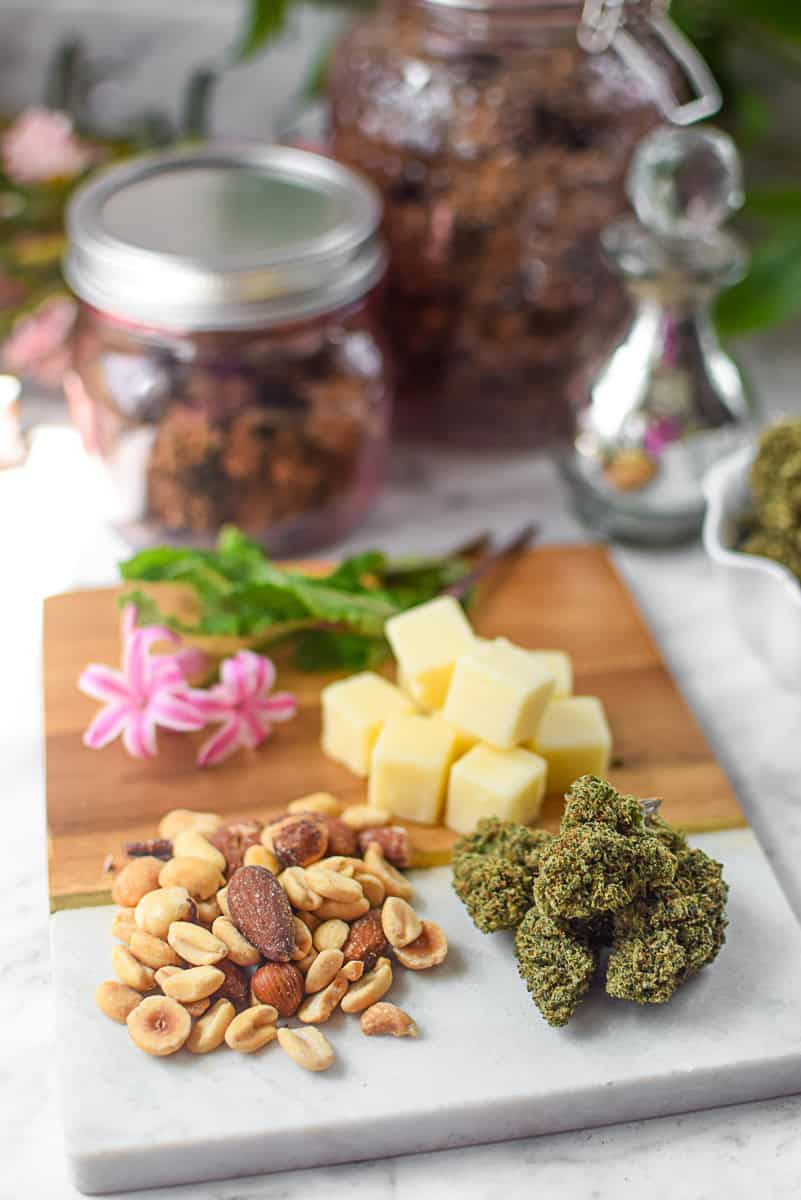
#1 – Fat Makes Potent Infusions
There is a reason that cannabutter remains the most popular homemade edible recipe.
Or that other oils like coconut, olive, and MCT are the perfect medium for making potent infusions.
Cannabis researchers have discovered that cannabinoids are lipophilic, meaning they’re soluble in dietary fat.
When we make an oil infusion, the goal is to get the trichomes that contain the cannabinoids off of the plant material and into the oil or butter (without the unwanted extras, like chlorophyll).
The more fat in the oil, the more effective and, thus, more potent the infusion becomes.
This maximizes the efficacy of the euphoria-inducing THC and inflammation-reducing CBD.
This process is not to be confused with extraction methods that utilize solvents like high-proof alcohol to extract the trichomes from the plant material, resulting in a tincture.
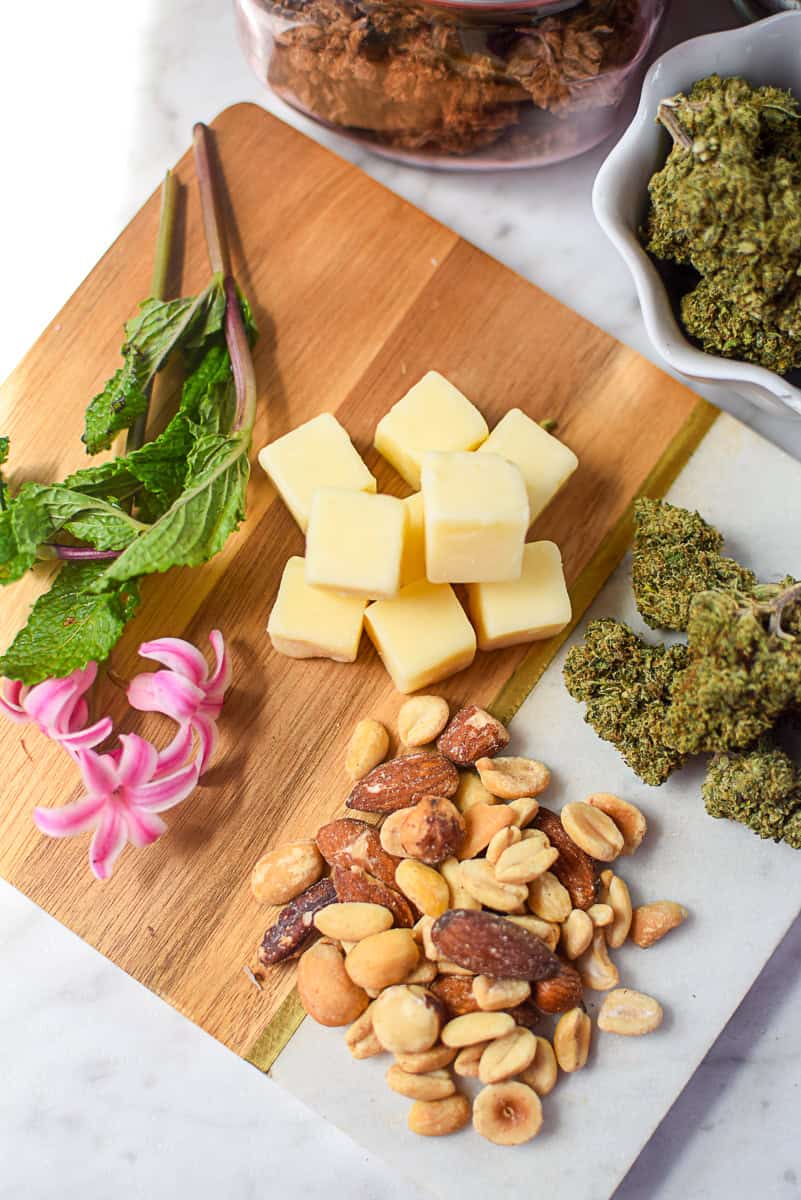
SAVE THIS GUIDE 💌
#2 – Absorption and Bioavailability
When preparing your edibles with dietary fats like butter, vegetable oil, and whole milk, you may think the process is over, but it is really just beginning.
In the next step, consuming fat alongside your edible can help enhance the bioavailability and absorption of cannabinoids in the body.
When ingesting edibles, they pass through the digestive system and are eventually absorbed into the bloodstream.
Cannabinoids then interact with the endocannabinoid system (ECS).
However, not all the ingested cannabinoids enter the bloodstream, and that’s where the term “bioavailability” comes into play.
Bioavailability means the amount of ingested THC and CBD that gets absorbed into the body and transmitted to the targeted tissues and organs.
It is the proportion of the active cannabinoids absorbed into the bloodstream compared to the dose.
For instance, if a 100 mg dose is consumed orally, and only 40 mg is absorbed in the body, then the drug’s bioavailability is 40%.
As reported in the American Journal of Translational Research, the THC and CBD bioavailability in the body increases by 2.5 and 3-fold when prepared using oils and fats, respectively.
That makes them more therapeutic and euphorically effective – a win for you!
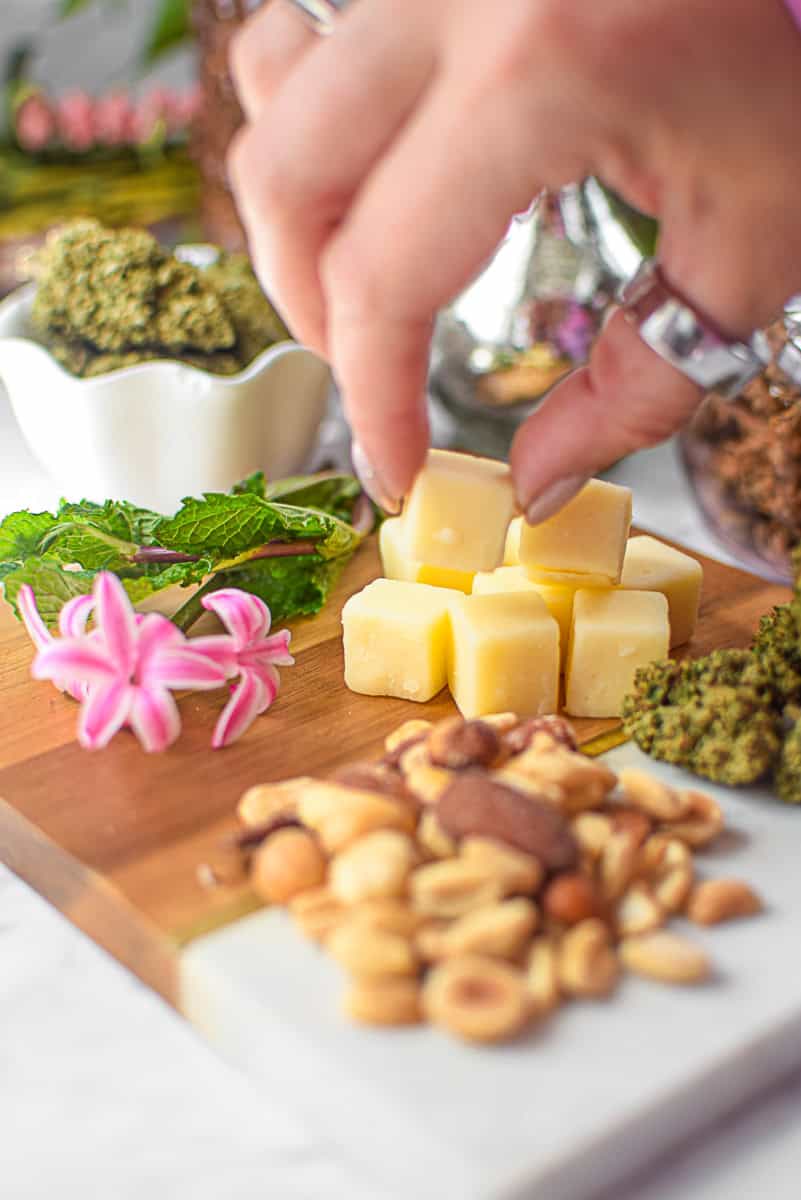
Final Thoughts
As we explored above, two good reasons exist to pair fat with edibles.
The first is to create a potent infusion because cannabinoids are lipophilic, meaning they love fat.
The second is that consuming edibles paired with fat can increase the bioavailability and absorption in the body.
This can create a better, more potent experience.
You can learn how to make your own oil infusions here; it is really quite easy, and you can even make them in an Instant Pot.
Unable to have fat for a certain reason?
Have no fear! You can rely on cannabis tinctures to extract the cannabinoids for you. Learn more here.
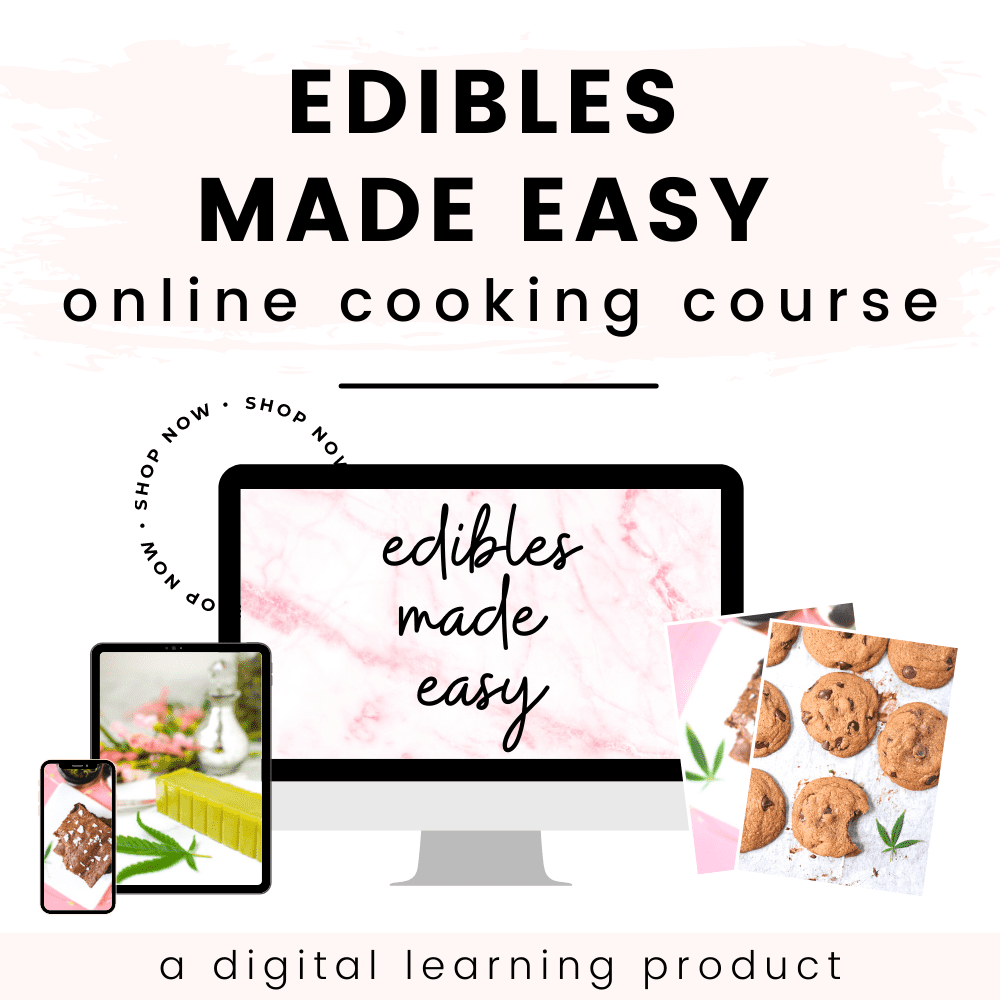
Take your edibles to the next level…
My Edibles Made Easy Online Cooking Course will teach you how to easily make cannabis edibles and topical recipes at home. This step-by-step video course will teach you how to infuse, extract, and create edibles with many different product types – all from the comfort of your own home.
More Articles You Will Love
Articles & How-To Guides
A Beginner’s Guide to Cannabis Edibles
Articles & How-To Guides
Cannabis Tolerance: Your Guide to Balance & Breaks
Articles & How-To Guides
Do Edibles Work Better on A Full or Empty Stomach?
Articles & How-To Guides
Do You Want Chlorophyll In Your Edibles?
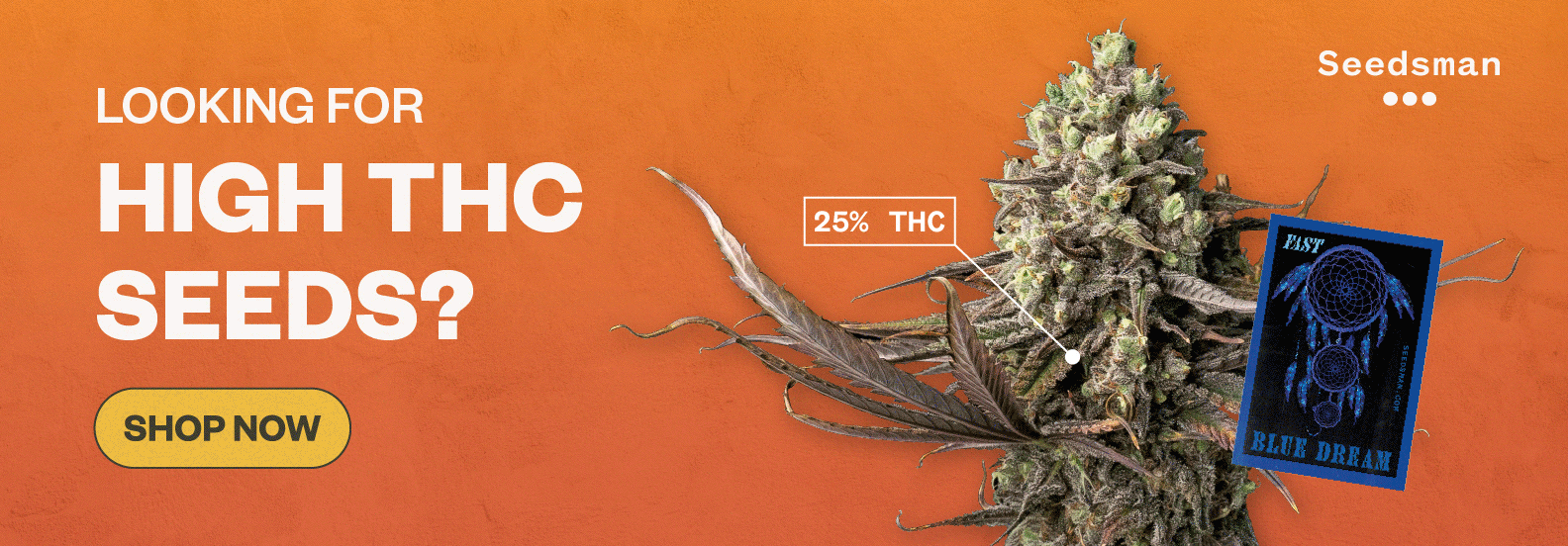

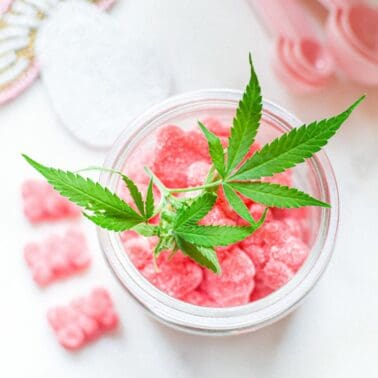
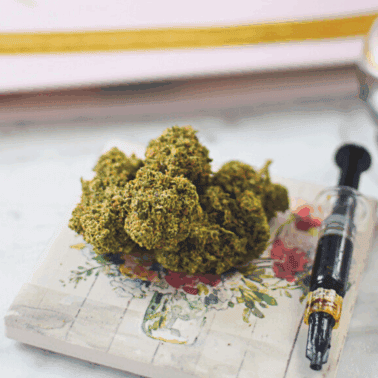

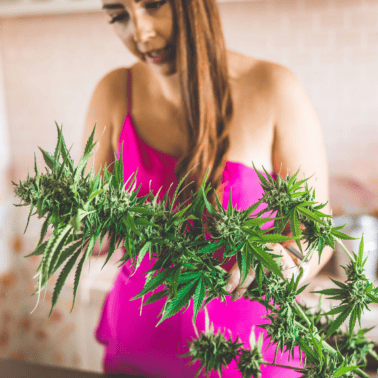
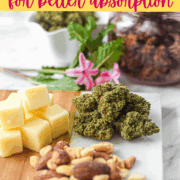








Thank you for all that info. I have a much better understanding of the fat issue now.
Glad you found the info helpful, Carol! Pairing edibles with fat really does make a difference—thanks for reading! 😊
Does the cannabis and fat need to be eaten mixed together? Or what if in the same meal but eaten separately? Will that work? There is no fat in a tincture so how does that work?
Great question, Carol! While it’s ideal to consume cannabis and fat together since fat helps improve the absorption of cannabinoids, eating them separately in the same meal can still work. The key is that your body will likely process the cannabinoids more efficiently if fat is present in your digestive system. As for tinctures, they are absorbed sublingually (under the tongue), bypassing the digestive system, so fat isn’t needed for their effectiveness. Hope that helps clarify!
Can you give examples of what fat (type, source) to pair with edibles?
Thanks!
Of course, Brian. Here are some examples:
– Saturated Fats – These are found in coconut oil, butter (especially from grass-fed cows), and palm oil. They are considered the best for binding with cannabinoids due to their saturated fat content.
– Monounsaturated Fats – Olive oil and avocados are great sources. They are not as effective as saturated fats, but still a good choice for pairing with edibles.
– Polyunsaturated Fats – These include nuts, seeds, and fish oil. While not the first choice for pairing with cannabinoids, they can still be beneficial due to their omega-3 and omega-6 fatty acids.
Each type of fat has its unique benefits and can be used based on personal preferences and dietary restrictions.
I love all your recipes! I’m new to infusing and love to try new recipes. You are a Great resource and your knowledge is invaluable. Thank you for doing all the research and trial and error for all of us !!!
Wow, Bonnie, thank you so much for your kind words 😊 It truly warms my heart to know that you’re finding value in the recipes and information shared. As a fellow lover of infusing, it’s always a joy to experiment, learn, and share what I’ve discovered with wonderful readers like you. Thank you for being part of our community.
I’m so delighted with all this information. Good to know so we can always pair our FECO and other cannabis products with fat. Thank you, Emily!
Hi Viviam. We are so happy this is helpful to you! ?